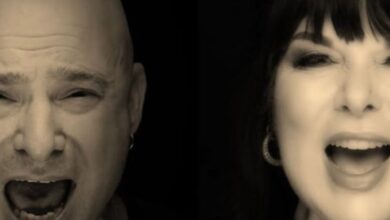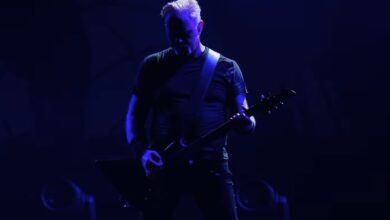Young Boys’ “Fade to Black” Live Studio Session Captures Metallica’s Soul
When MixedUpEverything released their live studio rendition of Metallica’s “Fade to Black,” it struck a chord. Uploaded in 2022, the stripped-down session trimmed away the arena bombast, leaving nothing but raw emotion. With over 2 million views and climbing, the performance reminded listeners of the song’s haunting power—reverberating through a small room the same way it once echoed through stadiums.
MixedUpEverything, a YouTube collective known for metal covers, built their reputation by treating classic songs like living stories. Their lineup of seasoned session musicians brings studio polish and heartfelt grit. They don’t just play notes—they channel the original artists’ intent. For “Fade to Black,” they tapped into Metallica’s melancholic core rather than chasing shredding pyrotechnics. The result felt honest, almost confessional.
The decision to record live in-studio gave the performance palpable intimacy. No editing tricks—every note, every fret buzz, every breath counts. The guitarist’s Fender tone bore the soft attack of the 1984 original, while the drums remained measured, letting the mournful lead guitar lead the narrative. The vocals, rough around the edges, fit the song’s theme of despair and longing perfectly.
Listeners responded immediately. One thread on Reddit called MixedUpEverything’s take “one of my favourites,” adding it “totally blew my mind as a teenager, hearing a cover of my favourite band in a genre I was just getting into.” That kind of passionate endorsement speaks to the cover’s authenticity and its ability to connect across generations.
Musically, the performance hinged on balance. Metallica’s original shifts from clean, melancholy verses to distorted, scream-worthy climaxes. MixedUpEverything mirrored that arc, building tension behind a single guitar arpeggio before erupting into crunch-heavy choruses. Without the backing of an arena, the smaller venue made every chord feel personal.
The group’s take on the solo reflects careful study. Slash-like phrasing and Hammett-inspired bends, yet reinterpreted—not mimicked. It shows respect for the source while planting their own flag. That solo remains one of metal’s great emotional peaks, whether played in a stadium or a home studio.
This performance taps into nostalgia, but it also demonstrates that “Fade to Black” remains relevant. Hearing it in a live-room context reminds listeners of the song’s songwriting strength. It’s not just about heavy riffs—it’s about melody, contrast, and emotional build. That’s why it holds up decades after its 1984 release.
Over time, covers like this remind us that great songs don’t need spectacle. MixedUpEverything’s video became a benchmark for future covers. Bands began releasing live studio sessions of anthems, focusing on raw emotion over high-gloss production. This session arguably helped shift that trend.
Though many artists have covered “Fade to Black”—from acoustic folk to symphonic metal—few achieve this level of resonance. The pairing of studio clarity and live energy means listeners can hear every nuance. It shapes a new kind of listening experience that feels both fresh and deeply familiar.
MixedUpEverything also tapped into fan nostalgia with subtle visuals: dark lighting, vintage gear, minimal staging. It felt like a nod to Metallica’s earliest performances. Fans often cite those early shows as raw noise filled with passion, not technical perfection. The session captured that spirit.
The performance’s legacy is growing. Clips from the session have been used in podcasts analyzing classic metal, and instructors cite it in tutorials as a definitive live cover of a classic solo. It’s finding a place in Metallica’s broader influence ecosystem.
Personal anecdotes add depth. One commenter noted they first fell in love with Metallica through their grandfather’s vinyl. Hearing the cover now, in a quiet room, they say they “felt like those nights all over again.” It’s a testament to how covers can reconnect listeners to foundational memories.
The performance also emerged during a time of introspection—many musicians were stuck at home due to global events. Stripped-down live sessions became both creative outlets and emotional release. MixedUpEverything’s session wasn’t just a cover—it was catharsis for artists and fans alike.
In the end, their take on “Fade to Black” shows how covers can be more than mimicry. It’s reinvention through fidelity, capturing the song’s emotional spine while giving listeners a fresh perspective. It stands as a reminder that the best covers find new mirrors in old souls.
MixedUpEverything didn’t improve upon Metallica’s classic—they illuminated it. In their studio, in quiet darkness, “Fade to Black” found a new voice, and in doing so, reignited the quiet power of one of metal’s greatest songs.





